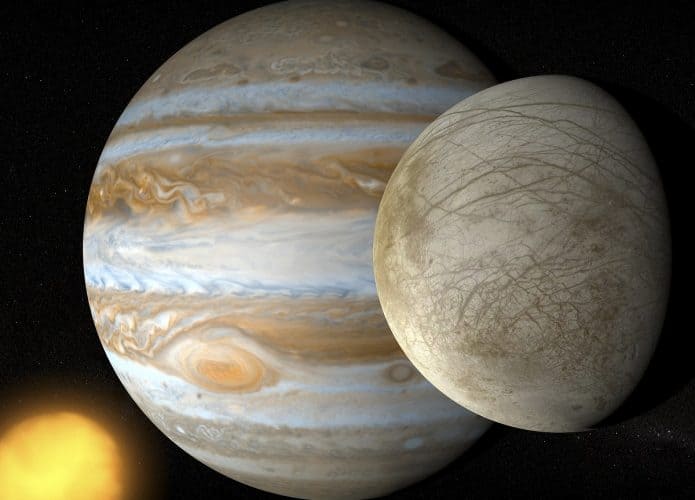NASA's Juno probe has discovered what may be possible signs of activity on the surface of one of Jupiter's moons. The Stellar Reference Unit (SRU) was used to image the surface of Europa at high resolution.
Read more
Compare images of the moon Europe
- The flyby image shows a strangely shaped area of the moon's icy surface.
- The area contains large blocks of ice about one kilometer in size that cast shadows.
- Using the image, the researchers compared the results with images of the same location taken by the Galileo probe, which studied Jupiter from 1995 to 2003.
- This analysis indicated that changes occurred on the surface of Europa during this period.
- The study was published in the journal JGR Planets.
- The information is from Space.com website.

New missions will attempt to confirm these possible changes in Jupiter's moons
Despite the evidence, a team of scientists at NASA's Jet Propulsion Laboratory (JPL), led by Heidi Becker, stated that the evidence was inconclusive due to differences in image quality and conditions.
The 2022 images also include nearby low-albedo sediments that could be linked to subsurface liquid water, researchers say. These dark spots may be associated with plumes that are thought to repel water.
New missions planned for the coming years must now investigate this potential activity on Europa. For example, the JUICE mission was launched in April last year and will arrive at Jupiter in December 2031. Europa Clipper is scheduled to launch on October 6 of this year on a Falcon Heavy rocket, designed by SpaceX.
